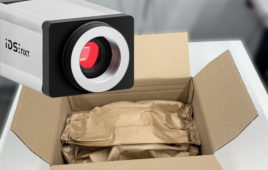At its December 14 open meeting, the Federal Communications Commission (FCC) is expected to vote the Restoring Internet Freedom (RIF) order. This order will bring uniformity to the protection of American consumers throughout the Internet, aligning the rules for broadband Internet access providers (access providers) with those for edge providers as well as ensuring consistency across all fifty states.
The order will reverse the 2015 classification of broadband Internet access as a Title II common-carrier service called a “telecommunications service.” Common-carrier regulation dates back to the Communications Act of 1934, and was designed for monopoly voice telephony, at a time when the Internet did not exist.
The Internet’s first incarnation was the connection of four computers by dial-up 64-kilobit lines in 1969. The impetus to the Internet’s growth was the popularization of the World Wide Web, which began in 1993. The Telecom Act of 1996’s update of the Communications Act of 1934 did not deal with the Internet extensively, but it did recognize that there were new services that were data-driven and it included under Title I a new classification called an “information service.” At the same time, it retained the common-carrier “telecommunications service” designation under Title II.
In other words, with regard to the Internet, the FCC has two statutory options. Using Title II, as the Wheeler FCC chose to do in 2015, opens the door to profound micromanagement designed for a monopoly, voice-only network whose sole function was transmission and whose switching was designed around central offices that easily separated intrastate from interstate calls.
Using Title I, as the Pai FCC is poised to do in 2017, allows for the much lighter touch that was applied before the 2015 order and at the same time restores jurisdiction to the Federal Trade Commission (FTC). The FTC has continuously regulated Internet edge-providers from the perspectives of consumer-protection as well as antitrust, i.e. competitor-protection, and only lost that jurisdiction over the access providers because of the 2015 order.
Applying Title II to the Internet makes as much sense as regulating space travel under traffic rules designed for the Model T, under the argument that both are forms of transportation. Worse, it has resulted in reduced investment in Internet-access infrastructure. Applying Title I is an elegant solution that ensures uniform consumer protection for all Americans who use the Internet.
The 2017 order, for the most part, eliminates the artificial and increasingly irrelevant distinctions that the 2015 order made between “edge” and “access” providers of Internet services. The 2017 order ensures, for example, that when a consumer initiates an inquiry to a search engine or sends an email or posts on social media, all the parties involved in relaying and responding to that activity, regardless of the parties’ location within the U.S., are subject to the FTC’s consumer-protection and the FTC’s and DOJ’s antitrust authority.
At the same time, the 2017 order provides for scrutiny and discipline by the FTC of access providers regarding key Internet-freedom behaviors. The order requires them to be transparent about specific network-management behaviors, including blocking and throttling. The major access providers have committed to avoid blocking and throttling. Having made those public commitments, access providers could be prosecuted by the FTC for violations once its jurisdiction is restored.
The FCC’s Restoring Internet Freedom order restores a light-touch, uniform regulatory approach to consumer protection on the Internet. It will also reinvigorate investment in this sector, which underpins much of the U.S. economy. It is a welcome return to Internet Freedom.
Anna-Maria Kovacs, Ph.D., CFA, is a Visiting Senior Policy Scholar at the Georgetown Center for Business and Public Policy. She has covered the communications industry for more than three decades as a financial analyst and consultant.
Filed Under: Industry regulations




